Australian Tropical Rainforest Plants - Online edition
Endiandra compressa C.T.White

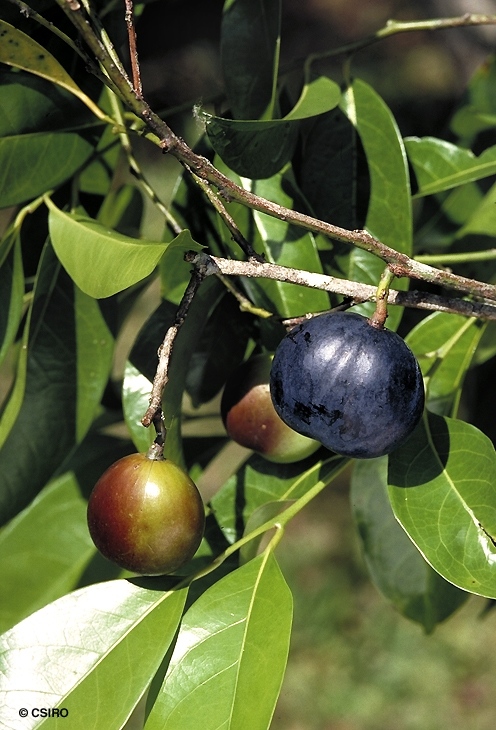
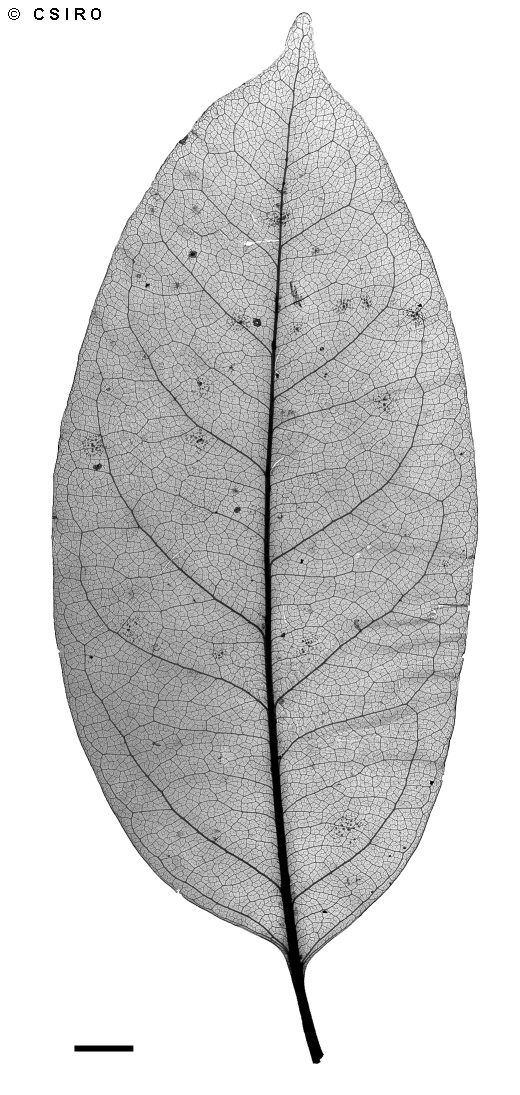
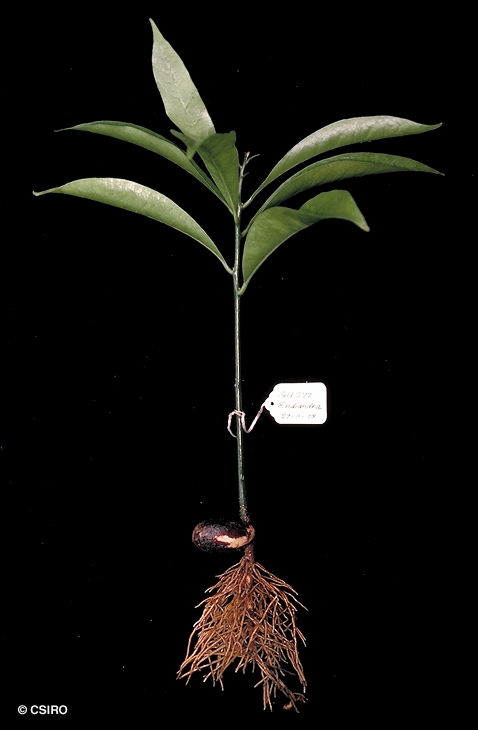
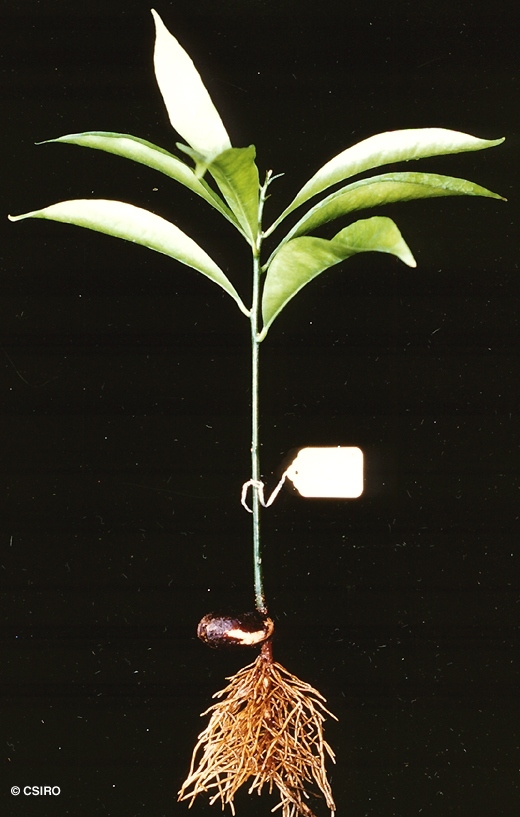

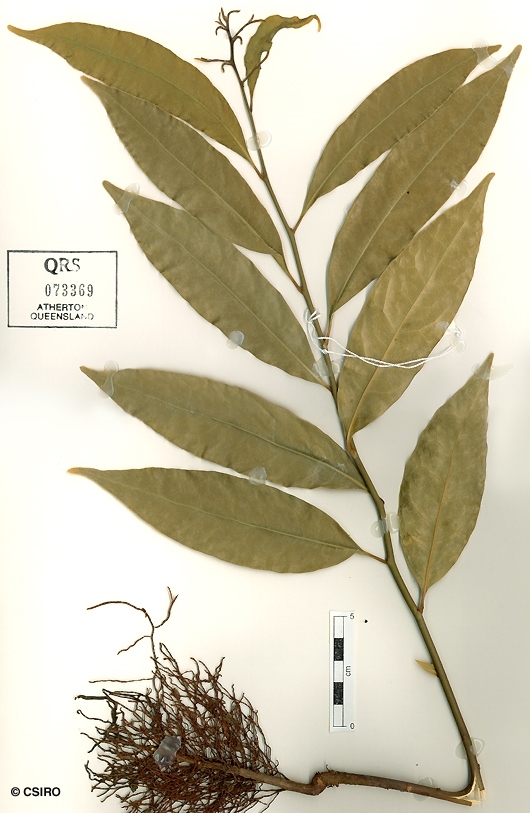

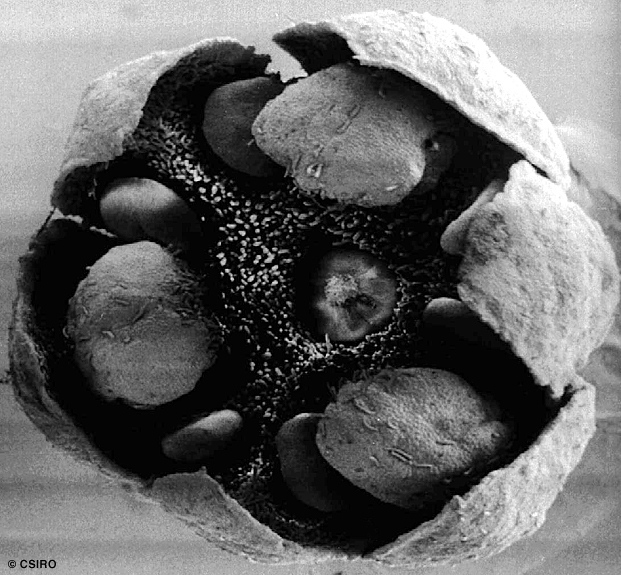
White, C.T. (1919) Queensland Department of Agriculture and Stock. Botany Bulletin 21: 14. Type: Imbil, F.H. Weatherhead;.
Queensland Greenheart; Greenheart; Whitebark
A thin pale brown layer generally visible beneath the subrhytidome layer before the first section of the outer blaze. Bark usually pale, whitish grey.
Twigs terete or slightly fluted, clothed in straight, appressed, pale brown hairs when young but soon becoming glabrous. Leaf blades green and glabrous on the underside. Leaf blades rather large, 12-25 x 6-9 cm. Lateral veins curving inside the blade margin but not always forming distinct loops. Midrib depressed or flush with the upper surface. Petioles flat or channelled on the upper surface. Oil dots visible with a lens.
Fruits laterally compressed, compressed globular or compressed pyriform, sometimes bilobed about 48-71 x 39-60 x 25-38 mm on the longer and shorter axis. Seed about 33-52 x 30-49 x 16-27 mm on the longer and shorter axis. Cotyledons cream to pink.
Endemic to Australia, occurs in CYP, NEQ, CEQ and southwards as far as north-eastern New South Wales. Altitudinal range in NEQ from sea level to 450 m. Grows as an understory tree in well developed rain forest on a variety of sites in NEQ.
Fruit eaten by Cassowaries. Cooper & Cooper (1994).
Before the development of fibreglass and carbon fibre, the timber of this species was used in the manufacture of fishing rods. Swain (1928).
This species seldom grows large enough to produce millable logs. Wood specific gravity 0.97. Hyland (1989).





